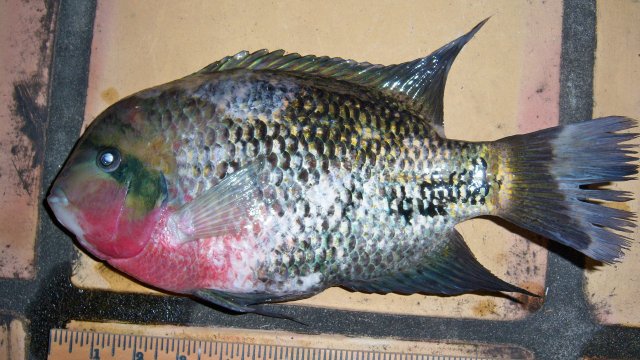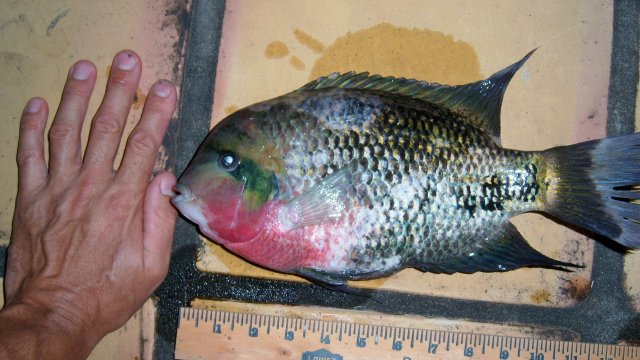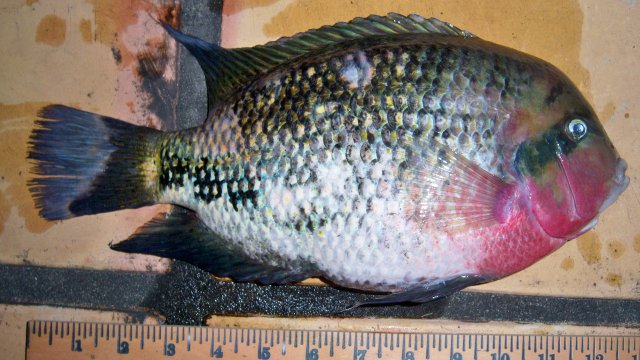Hi all, I am a newbie at cichlids.
I rescued a couple of these vieja cichlids two years ago in Tampa.
[1] What's their taxonomic name?
Found one today wrapped around a drain screen. It measures 13". They were about 6" two years ago when I got them. They have been in one of my 4500 gal for 1.5 years and always superb feeders. The dead cichlid is quite plum - it never showed any decline in appetite and it has always had a nice plum tummy. The colors have also been this vibrant for a long time, perhaps at least a year.
It has a few bite marks but these are post-mortum. It was never a target of any stress from its tank mates.
[2] Anyhow, my question is: does this death look suspicious or is it the norm for them to die of age while looking pretty healthy to my ignorant eye?
[3] What's the normal range for their lifetime span?
I'e had some problems for about a year with too soft a water (KH and GH of 1-2 degree) and pH not being stable but this has been fixed for ~8 months now. Other than that the water is clean, zero NH3 and NO2. 5 ppm NO3. Vigorous aeration.
When I went (very gradually) from the soft water to less soft water (KH ~4, GH ~6), I have not noted any change in the two vieja behavior, nor in appetite - it has always been superb and they have not been fussy at all. They seem to like catfish pellets but also got a great variety of other foods.



I rescued a couple of these vieja cichlids two years ago in Tampa.
[1] What's their taxonomic name?
Found one today wrapped around a drain screen. It measures 13". They were about 6" two years ago when I got them. They have been in one of my 4500 gal for 1.5 years and always superb feeders. The dead cichlid is quite plum - it never showed any decline in appetite and it has always had a nice plum tummy. The colors have also been this vibrant for a long time, perhaps at least a year.
It has a few bite marks but these are post-mortum. It was never a target of any stress from its tank mates.
[2] Anyhow, my question is: does this death look suspicious or is it the norm for them to die of age while looking pretty healthy to my ignorant eye?
[3] What's the normal range for their lifetime span?
I'e had some problems for about a year with too soft a water (KH and GH of 1-2 degree) and pH not being stable but this has been fixed for ~8 months now. Other than that the water is clean, zero NH3 and NO2. 5 ppm NO3. Vigorous aeration.
When I went (very gradually) from the soft water to less soft water (KH ~4, GH ~6), I have not noted any change in the two vieja behavior, nor in appetite - it has always been superb and they have not been fussy at all. They seem to like catfish pellets but also got a great variety of other foods.





